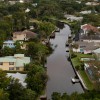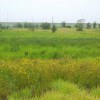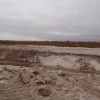Submerged aquatic vegetation has numerous benefits for aquatic ecosystems, from improving water quality to providing important habitat that supports a diverse food web. This new 6-page publication of the UF/IFAS Department of Soil and Water Sciences describes the breadth of options available to managers who wish to plant SAV at new locations. Because all methods have both benefits and drawbacks, and because all planting locations have different (often unknown) challenges for plant survival, managers may choose to try multiple methods to increase the likelihood for success. Written by Laura Reynolds, Carrie Reinhardt Adams, Enrique Latimer, Charles W. Martin, Christine Rohal, and Jodi Slater.
https://edis.ifas.ufl.edu/ss685
Tag: Ecosystem Restoration
Ecosystem Services Valuation for Estuarine and Coastal Restoration in Florida
 Throughout Florida’s history, humans have altered the coastlines, leading to large-scale degradation of coastal ecosystems. This has led to the loss of associated ecosystem services, including products such as food and timber and processes like coastal protection and disease control. Unfortunately, ecosystem restoration efforts have not always been a priority for coastal management. This 10-page literature review surveys the available ecosystem-service valuation literature for five of Florida’s coastal natural communities–oyster reefs, beach dunes, mangrove forests, seagrass beds, and salt marshes–to facilitate the quantification of ecosystem services to provide a better measure of the full impact of restoration efforts. Written by Susanna Blair, Carrie Adams, Tom Ankersen, Maia McGuire, and David Kaplan, and published by the UF Department of Sea Grant, November 2014. (UF/IFAS photo by Tyler Jones)
Throughout Florida’s history, humans have altered the coastlines, leading to large-scale degradation of coastal ecosystems. This has led to the loss of associated ecosystem services, including products such as food and timber and processes like coastal protection and disease control. Unfortunately, ecosystem restoration efforts have not always been a priority for coastal management. This 10-page literature review surveys the available ecosystem-service valuation literature for five of Florida’s coastal natural communities–oyster reefs, beach dunes, mangrove forests, seagrass beds, and salt marshes–to facilitate the quantification of ecosystem services to provide a better measure of the full impact of restoration efforts. Written by Susanna Blair, Carrie Adams, Tom Ankersen, Maia McGuire, and David Kaplan, and published by the UF Department of Sea Grant, November 2014. (UF/IFAS photo by Tyler Jones)
http://edis.ifas.ufl.edu/sg134
Multiple-Use Landscapes: Reclaimed Phosphate Mined Lands (SL374/SS575)
 Phosphate mining is a temporary land use. The jobs and economic activity associated with mining depart an area once the resource is exhausted — but the landscape created as a result of mining and reclamation will exist in perpetuity. Communities affected by mining activities need to have reclamation result in lands with high potential to provide sustainable economic opportunities while maintaining ecosystem services and ecological functions. This 8-page fact sheet provides a brief overview of the landscapes being created as a result of phosphate mining and reclamation activities in Florida. Written by M. Wilson and E.A. Hanlon, and published by the UF Department of Soil and Water Science, October 2012.
Phosphate mining is a temporary land use. The jobs and economic activity associated with mining depart an area once the resource is exhausted — but the landscape created as a result of mining and reclamation will exist in perpetuity. Communities affected by mining activities need to have reclamation result in lands with high potential to provide sustainable economic opportunities while maintaining ecosystem services and ecological functions. This 8-page fact sheet provides a brief overview of the landscapes being created as a result of phosphate mining and reclamation activities in Florida. Written by M. Wilson and E.A. Hanlon, and published by the UF Department of Soil and Water Science, October 2012.
http://edis.ifas.ufl.edu/ss575
Florida Reclaimed Phosphate Mine Soils: Characteristics, Potential Uses, and Management Considerations (SL370/SS571)
 A critical nutrient for plant growth, phosphate helps sustain the world’s growing population. In 2010, seven mines in Florida produced approximately 10% of the world’s phosphate supply and more than 65% of the phosphate for the United States. But each year in Florida thousands of acres disturbed by strip-mining for phosphate rock must be reclaimed for other productive uses. This 11-page fact sheet provides a general characterization of the various soil types resulting from phosphate mine reclamation. Written by M. Wilson and E.A. Hanlon, and published by the UF Department of Soil and Water Science, October 2012.
A critical nutrient for plant growth, phosphate helps sustain the world’s growing population. In 2010, seven mines in Florida produced approximately 10% of the world’s phosphate supply and more than 65% of the phosphate for the United States. But each year in Florida thousands of acres disturbed by strip-mining for phosphate rock must be reclaimed for other productive uses. This 11-page fact sheet provides a general characterization of the various soil types resulting from phosphate mine reclamation. Written by M. Wilson and E.A. Hanlon, and published by the UF Department of Soil and Water Science, October 2012.
http://edis.ifas.ufl.edu/ss571
Landscape Diversity: Florida Phosphate Mine Pit Lakes (SL364/SS565)
 This 8-page fact sheet contains a synopsis of findings obtained through research, contrasted with limnological studies of natural lakes in central Florida. Written by M. Wilson and E.A. Hanlon, and published by the UF Department of Soil and Water Science, May 2012.
This 8-page fact sheet contains a synopsis of findings obtained through research, contrasted with limnological studies of natural lakes in central Florida. Written by M. Wilson and E.A. Hanlon, and published by the UF Department of Soil and Water Science, May 2012.
http://edis.ifas.ufl.edu/ss565
Landscape Diversity: Multiple-Use Landscapes for Reclaimed Phosphatic Clay Areas (SL229/SS449)
 With planning, communities can use reclaimed phosphatic clay areas for agriculture and at the same time restore lost wetlands, improve water quality and water use efficiency, and retain areas valuable to wildlife. This 5-page concept paper was written by E.A. Hanlon, M. Wilson, C. Beavers, and J. Cates, and published by the UF Department of Soil and Water Science, August 2011.
With planning, communities can use reclaimed phosphatic clay areas for agriculture and at the same time restore lost wetlands, improve water quality and water use efficiency, and retain areas valuable to wildlife. This 5-page concept paper was written by E.A. Hanlon, M. Wilson, C. Beavers, and J. Cates, and published by the UF Department of Soil and Water Science, August 2011.
http://edis.ifas.ufl.edu/ss449
ENH1161/EP423 Research Needs and Logistic Impediments in Restoration, Enhancement, and Management Projects: A Survey of Land Managers
ENH1161, a 7-page report by Carrie R. Adams and Nancy M. Steigerwalt, presents the results of a survey of practitioners and land managers to determine research and outreach needs for restoration, enhancement, and management goals in the southeastern coastal plain. Includes references. Published by the UF Department of Environmental Horticulture, March 2010.
http://edis.ifas.ufl.edu/ep423
CIR1523/UW280 Stressor Response Model for the Spotted Sea Trout, Cynoscion nebulosus
Circular 1523, a 16-page illustrated circular by Frank J. Mazzotti, Leonard G. Pearlstine, Tomma Barnes, Stephen A. Bortone, Kevin Chartier, Alicia M. Weinstein, and Donald DeAngelis, is one of a suite of Caloosahatchee estuary models which are being considered together for Everglades restoration plan evaluation. Includes references. Published by the UF Department of Wildlife Ecology and Conservation, January 2008.
http://edis.ifas.ufl.edu/UW280
CIR1524/UW281 Stressor Response Model for Tape Grass (Vallisneria americana)
Circular 1524, a 22-page illustrated circular by Frank J. Mazzotti, Leonard G. Pearlstine, Tomma Barnes, Stephen A. Bortone, Kevin Chartier, Alicia M. Weinstein, and Donald DeAngelis, is one of a suite of Caloosahatchee estuary models which are being considered together for Everglades restoration plan evaluation. Includes references. Published by the UF Department of Wildlife Ecology and Conservation, January 2008.
http://edis.ifas.ufl.edu/UW281
